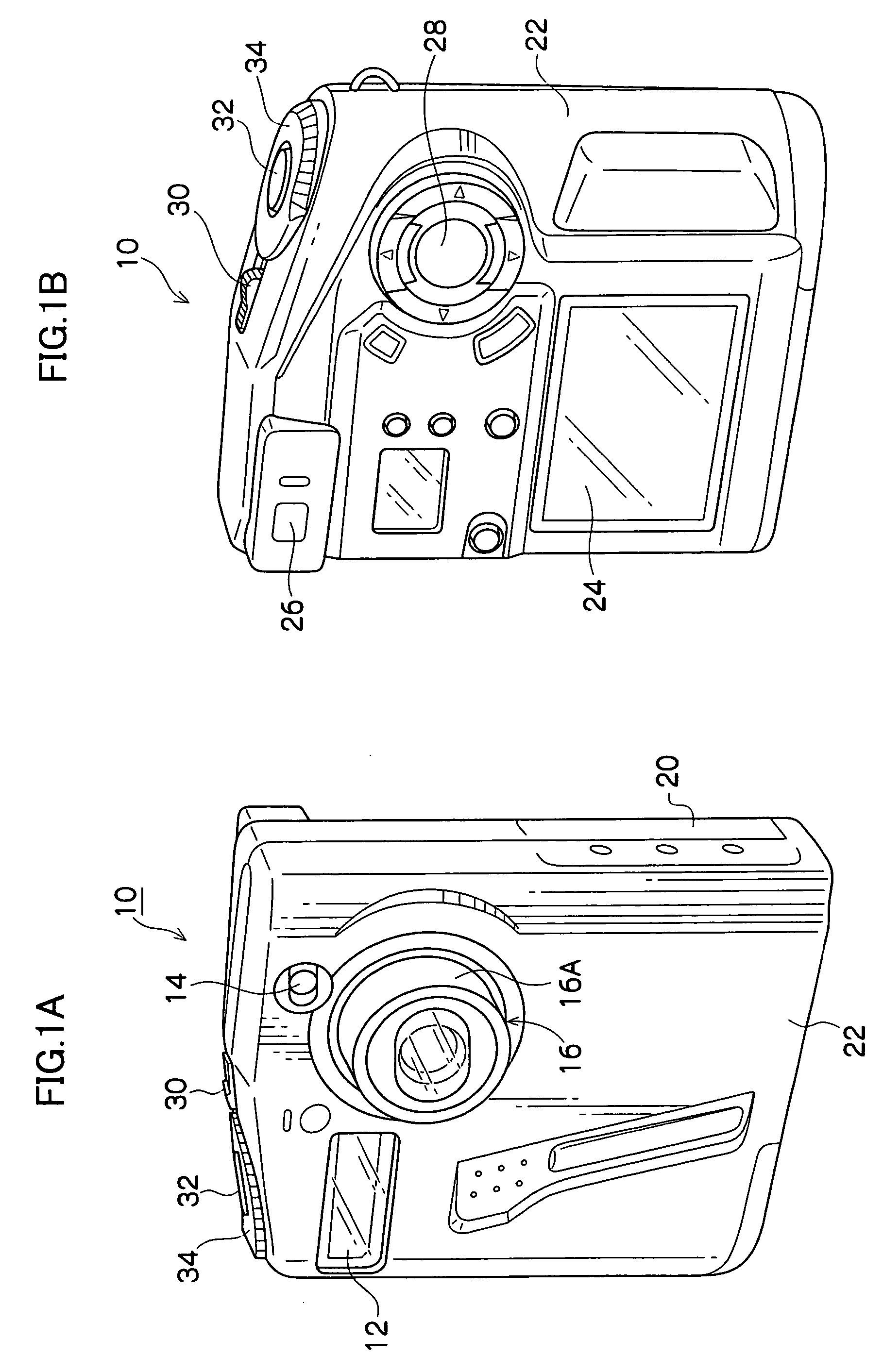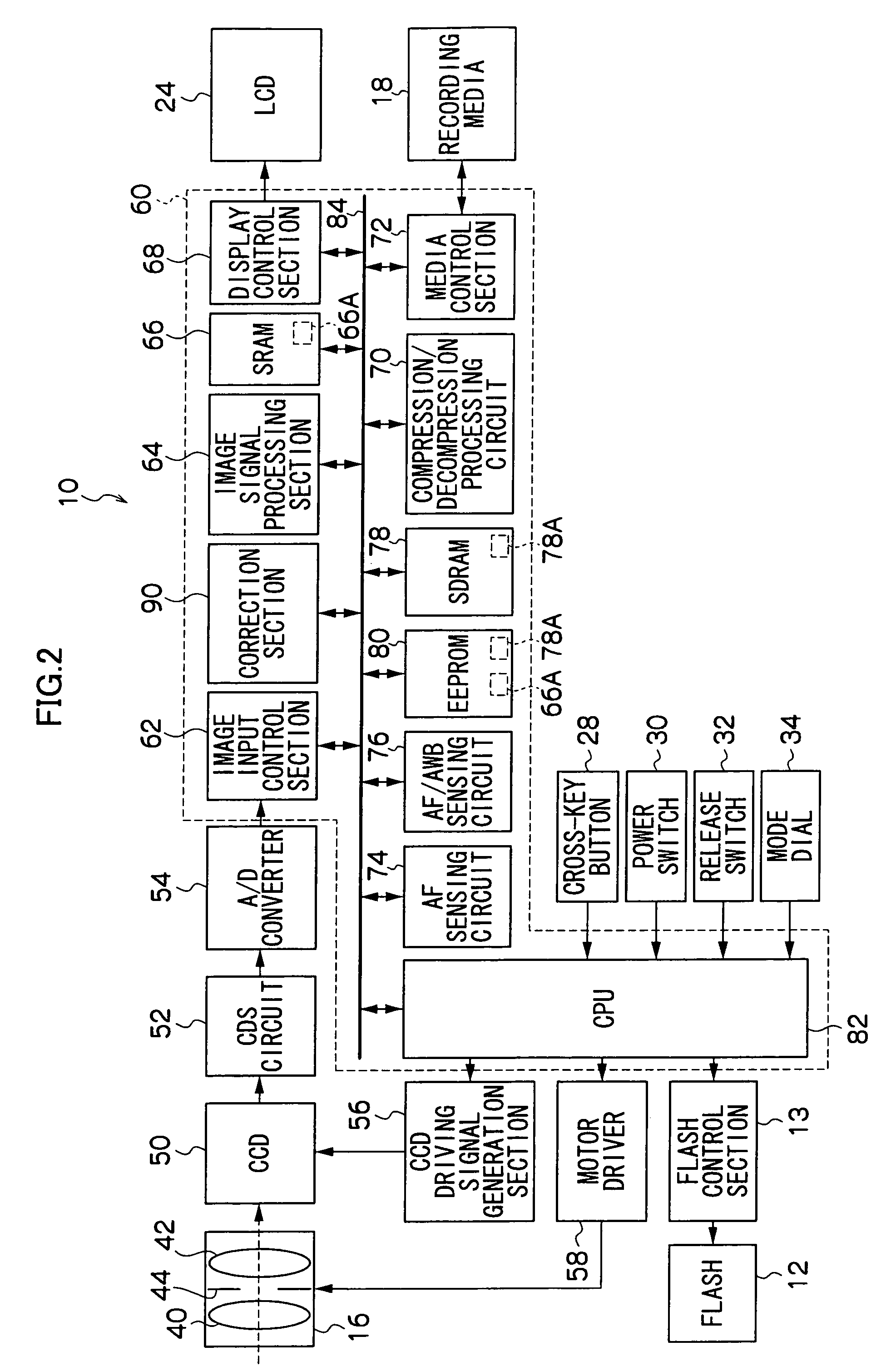Image capture device and image data correction process of image capture device
a technology of image data and image capture device, which is applied in the field of image capture device and image data correction process at the image capture device, can solve the problems inability to accurately output signals, and inability to guarantee the memory capacity of the second memory unit, etc., to achieve high image quality, reduce the effect of deterioration of image quality and reducing the number of deterioration of pixels
- Summary
- Abstract
- Description
- Claims
- Application Information
AI Technical Summary
Benefits of technology
Problems solved by technology
Method used
Image
Examples
first embodiment
[0032] As shown in FIG. 1A, a flash 12, a viewfinder window 14 and an optical unit 16 are provided at a front face of a digital camera 10 which serves as an image capture device of the present invention. The flash 12 emits light when illumination is poor. Light from a subject to be photographed is incident at the viewfinder window 14. The optical unit 16 is for focusing a subject image. A slot 20 is provided at a side face of the digital camera 10. A portable recording media 18 (see FIG. 2), which records images obtained by photography as digital data, can be mounted at the slot 20.
[0033] The optical unit 16 is a retracting-type optical lens, which is retracted inside a casing 22 of a main body of the digital camera 10 except at times of photography. At times of photography, an extendable barrel 16A is extended along an optical axis and, as shown in FIG. 1A, the barrel 16A is exposed outside the casing 22. The optical unit 16 includes, inside the barrel 16A, an imaging lens 40, a f...
second embodiment
[0068] For the first embodiment described above, a case has been described of performing pixel correction of defective pixels which have static characteristics, at which generated noise components are substantially constant irrespective of the length of a duration of exposure. For the present embodiment however, a case will be described of performing correction on both defective pixels which have dynamic characteristics, such as thermal white flaws and the like at which the amount of a noise component which is generated by a defective pixel increases as an exposure duration becomes longer, and defective pixels having static characteristics, as have been discussed for the above-described first embodiment.
[0069] Furthermore, for the first embodiment described above, respective memorization of the continuous defect correction LUT 66A and the isolated defect correction LUT 78A as a plurality of LUTs at the EEPROM 80 has been described. For the present embodiment however, prior memoriza...
PUM
 Login to View More
Login to View More Abstract
Description
Claims
Application Information
 Login to View More
Login to View More - R&D
- Intellectual Property
- Life Sciences
- Materials
- Tech Scout
- Unparalleled Data Quality
- Higher Quality Content
- 60% Fewer Hallucinations
Browse by: Latest US Patents, China's latest patents, Technical Efficacy Thesaurus, Application Domain, Technology Topic, Popular Technical Reports.
© 2025 PatSnap. All rights reserved.Legal|Privacy policy|Modern Slavery Act Transparency Statement|Sitemap|About US| Contact US: help@patsnap.com



